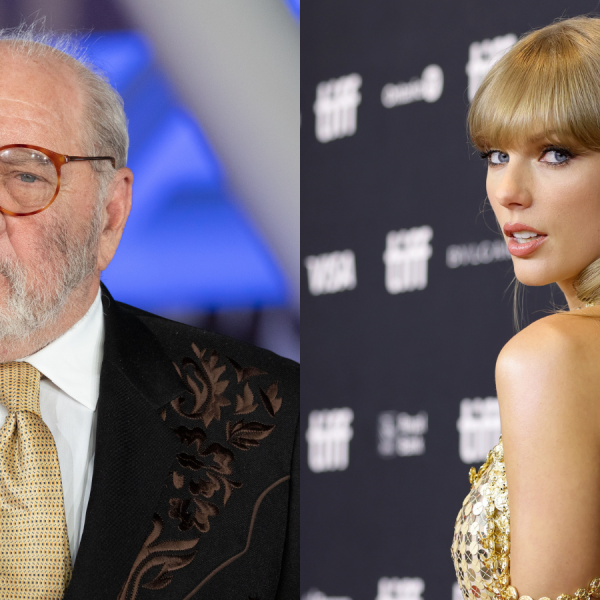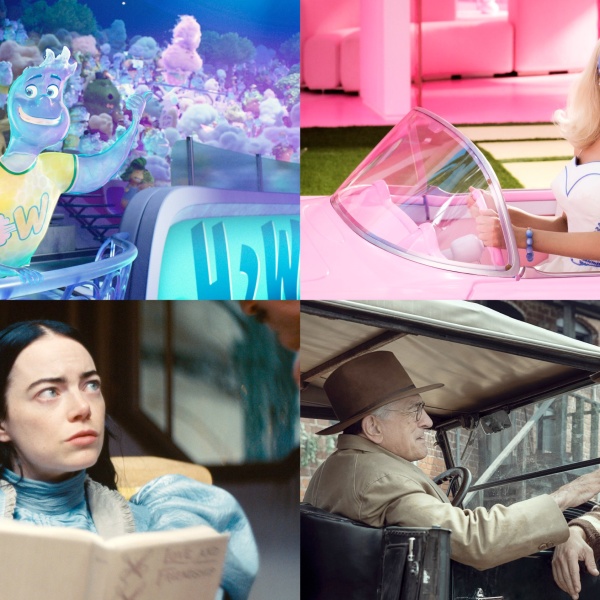
There’s something very wrong in Abel Ferrara‘s “4:44: Last Day On Earth.” The world, as the title would suggest, is coming to an end, and Ferrara, the fuck-you auteur behind “King of New York” and the non-Nic Cage-adorned “Bad Lieutenant,” is content with keeping things inside a spacious apartment on the Lower East Side of Manhattan. There aren’t any fireballs ascending heavenward, or steely buildings splintering into a million computer generated pieces. The anguish here isn’t global, but personal, and instead of millions of people, Ferrara zeroes in on an arty couple, played by Willem Dafoe (channeling his “Antichrist” persona of earnest concern, except with more levity and less genital mutilation) and the young Shanyn Leigh.
What has happened, exactly, is sort of a mystery. (There’s a lot that’s undefined in ‘4:44.’ Ferrara wasn’t quite sure, for example, which one of the couple could afford the apartment and the assortment of high-tech toys they interact with. “One of them comes from means,” was all he could suggest during the press conference.) At one point a newscaster says, simply, “Al Gore was right.” So: a global climate catastrophe, and the scientists have pinpointed 4:44 am as being the moment when all life on earth (at least as far as human beings are concerned) will come to a screeching halt. What’s an arty, combustible New York couple to do?

Well, as it turns out, what they do is connect with various people and things over the Internet, and have lots of sex. All things considered, it’s probably how a lot of us, feathered in a nest of technological wonderment and animalistic impulses, would spend our final few hours. At various points, the lead characters connect over Skype (with his ex-wife and estranged daughter, and her mother) to say their goodbyes, while trading off watching their favorite things off the Internet – she calls up Buddhist lectures on the divinity (and circuitousness) of nature, he shows clips of a football game he attended as a child.
Dafoe becomes fixated with the television as well, specifically the reports of the reaction to the impending apocalypse. In one memorable scene he looks towards the television screen, to see the Dalai Lama discussing greed, and he has a debate with the television, urging the Lama to condemn money as the ultimate earthly evil.
Elsewhere, Dafoe is battling his own demons. It turns out that he’s a substance abuser (the reason his wife and child left him) and in the only lengthy sequence to take place outside of the apartment, he visits his old dealer, and runs into a former friend (and addict). The friend has been clean for years and urges Dafoe to stay clean. Just because it’s the end of the world, there’s no reason to relapse. (For a movie about Armageddon, this internal tug-of-war – of whether or not Dafoe will use again – serves as the only true source of conflict in the entire film.)
And then there’s the sex, which Ferrara films in loving close-up, a snap of bare flesh here, a pair of pert nipples there, with an emphasis on the couples’ sounds. At one point Leigh, who is the kind of hippie artist who shaves her privates, walks around the apartment in old-timey pajamas and spends much of the movie working on a large, mural-sized painting of a biblical ouroboros, urges Dafoe to come inside her during one tryst. She seems to be hedging her bets: just in case the scientists were wrong and there are still some people left behind, she wants to make sure she can repopulate things.
But for all its arty posturing, there’s something anticlimactic and, ultimately, unfulfilling about ‘4:44.’ Without the budget to convey, either through extensive dialogue or visual effects, the doom awaiting our characters, it’s hard to get entirely caught up in their predicament. There is an emotional attachment, for sure. Spending an hour and a half with two characters will do that to you. But once The End finally arrives, there’s nothing more than the hazy sensation of the Northern Lights above the Manhattan skyline and some pseudo-spiritual/scientific assumption of what will occur. While Ferrara’s approach to the subject matter is admirable (and brings to mind another New York Film Festival entry, Lars von Trier’s considerably more impressive “Melancholia“), there’s not enough zip to make you truly care. Ferrara, in the press conference following the screening, admitted a certain amount of debt to the disaster genre, but he seems unaware of the emotional stakes required for such an endeavor. It’s the end of the world as we know it, and you’ll feel fine. [C-]





